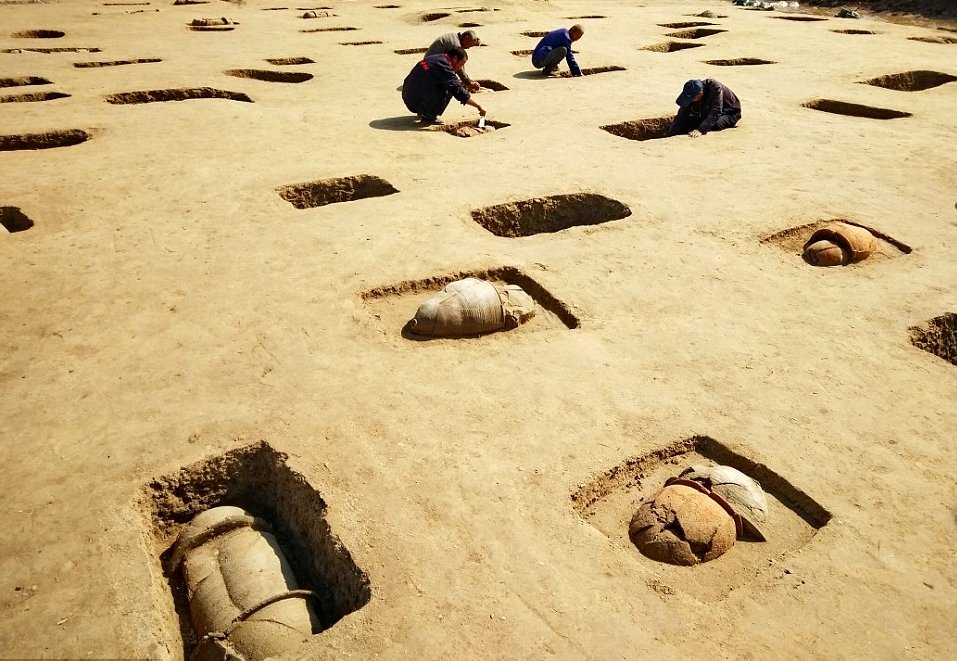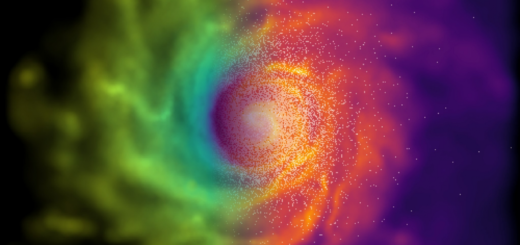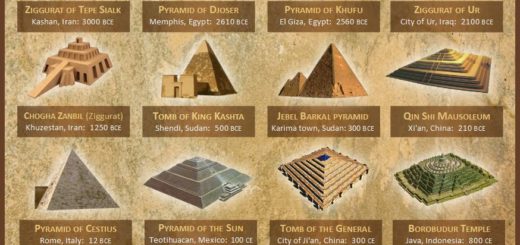Mystery Of The 2,000-Year-Old ‘Urn Burial’ Ceremonies: 113 Tombs Discovered Near the Ancient City Of Fudi
-Archaeologists excavating in China may be closer to unravel the mystery of the 2,000-year-old urn burial mystery. As many as 113 ancient tombs have been discovered near the ancient city of Fudi, in Huanghua, northern China’s Hebei Province.
Each of the tombs contained human remains wrapped with two to three clay containers. Scientists think this unique finding will shed more light on the burial customs of the Western Han Dynasty (202BC-8).

All the remains were buried using a method called ‘urn burial’, which means the corpses were wrapped using two to three large clay containers, such as urns, pots and bowls.
A small hole would be drilled at a side of the clay coating. It’s believed that this was to let the soul of the deceased come and go freely.
The discovery is surprising. It was previously thought that urn burials were only practiced on children, but some of the newly found tombs contain adults. This indicates this ancient burial practice was widespread.
“Due to river digging and the destruction of nature in the past 2,000 years, we have only managed to excavate part of the tomb site.
‘We have discovered remains some 150 metres (492 miles) south of the site, which means the number of adults having been buried in urns could be much higher,” Zhang Baogang, the head of the Huanghua Museum said.
Zhang said that the tombs were thought to belong to civilians.



 Creators of mankind
Creators of mankind Description of “Tall white aliens”
Description of “Tall white aliens” Where they came from?
Where they came from? About hostile civilizations
About hostile civilizations The war for the Earth
The war for the Earth “Tall white aliens” about eternal life
“Tall white aliens” about eternal life Video: “Nordic aliens”
Video: “Nordic aliens” Aliens
Aliens Alien encounters
Alien encounters The aliens base
The aliens base UFO
UFO Technology UFO
Technology UFO Underground civilization
Underground civilization Ancient alien artifacts
Ancient alien artifacts Military and UFO
Military and UFO Mysteries and hypotheses
Mysteries and hypotheses Scientific facts
Scientific facts


















